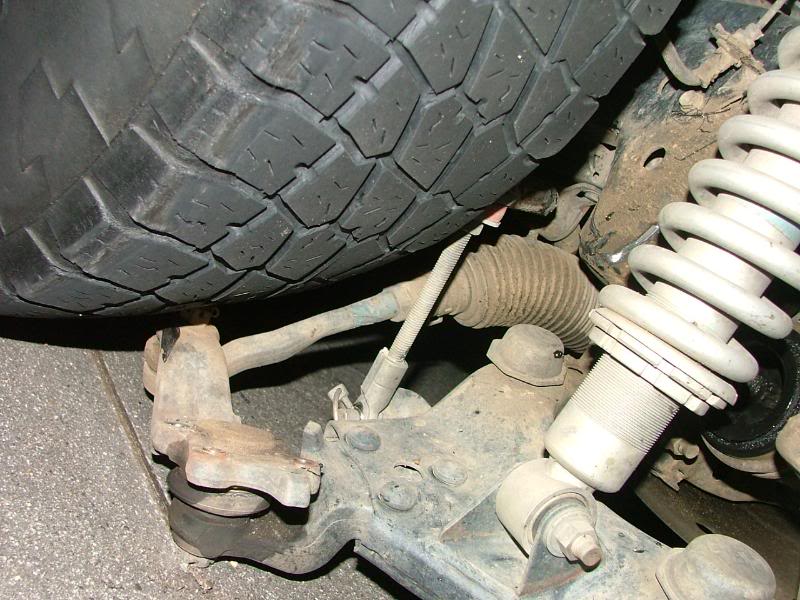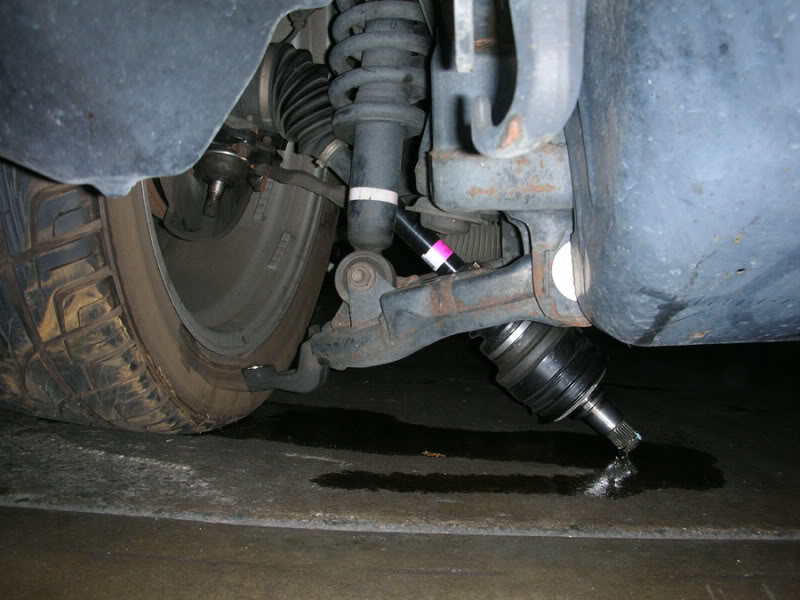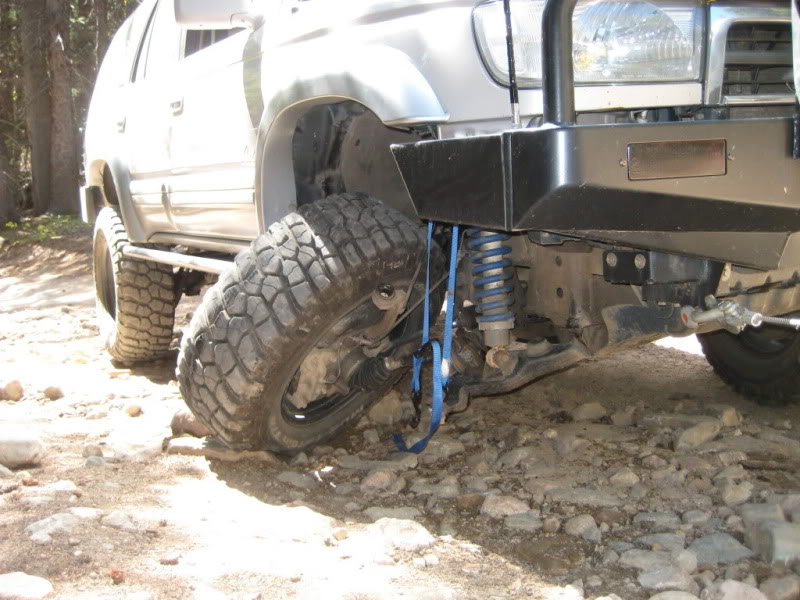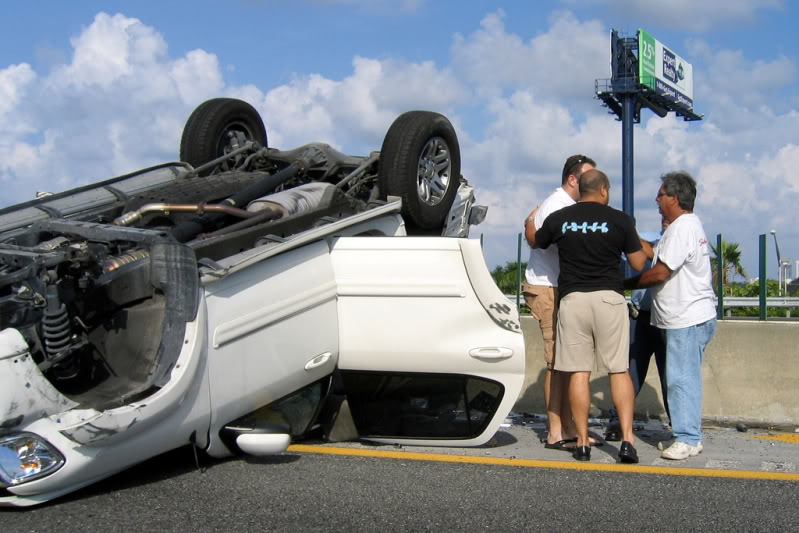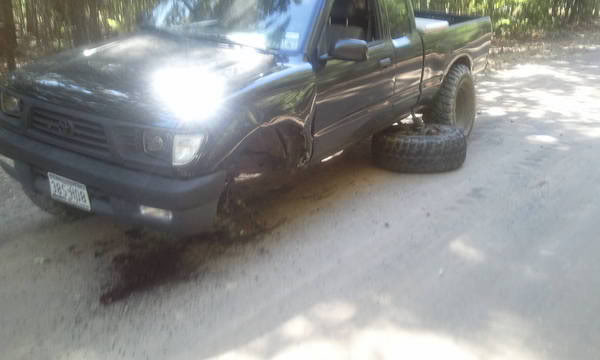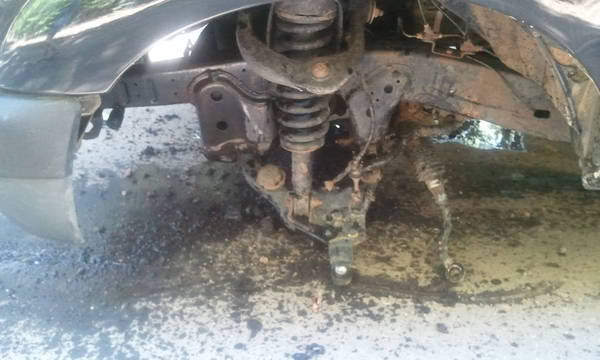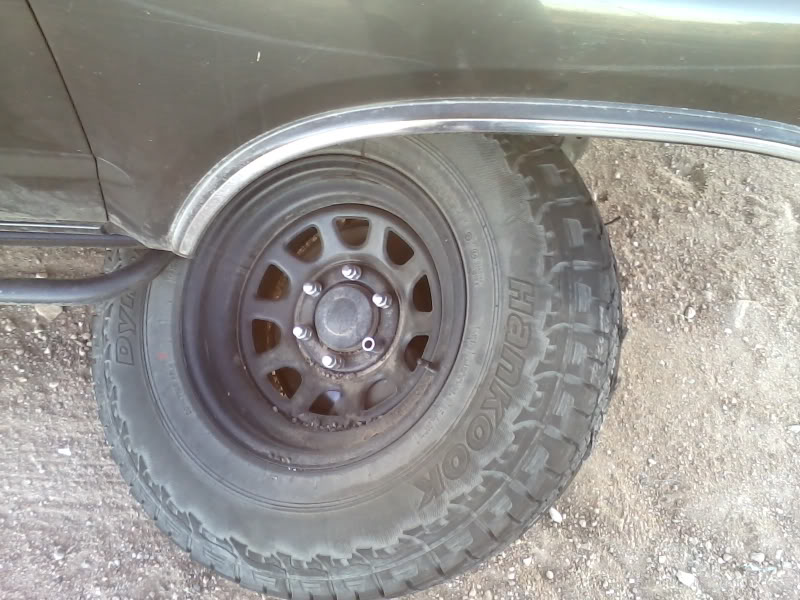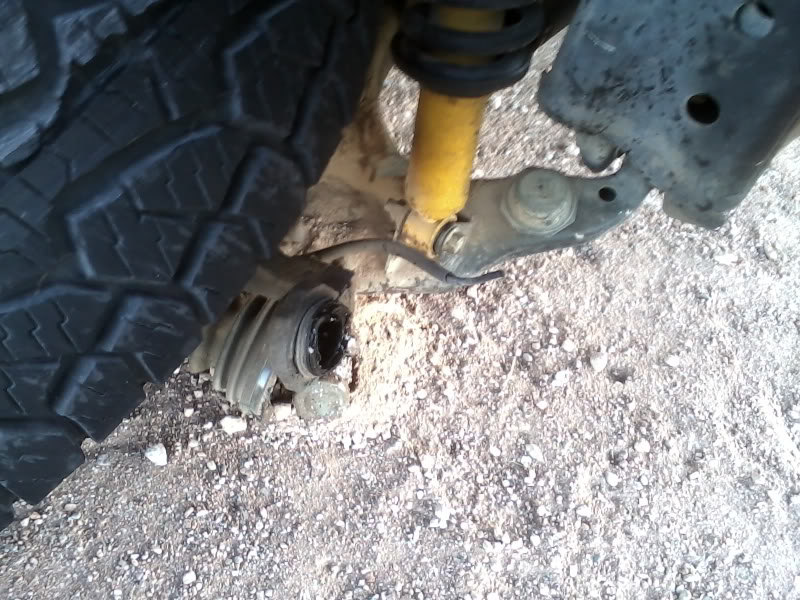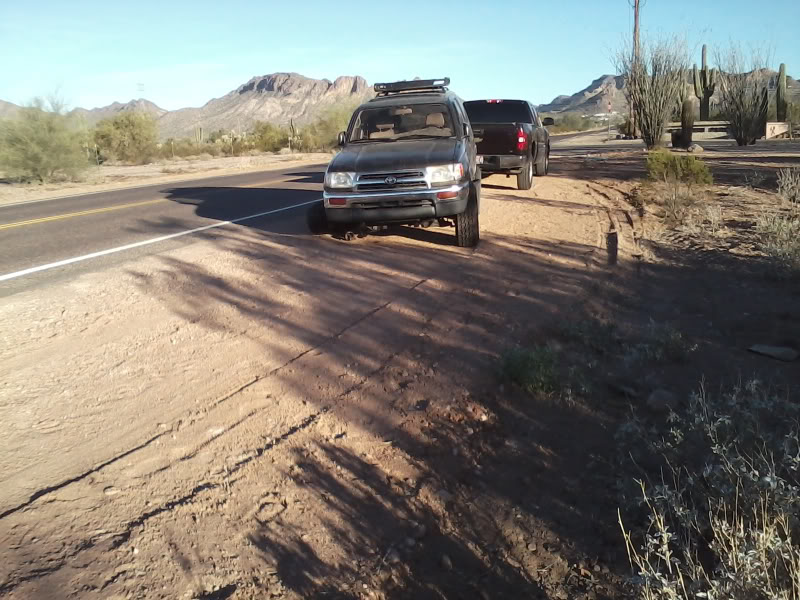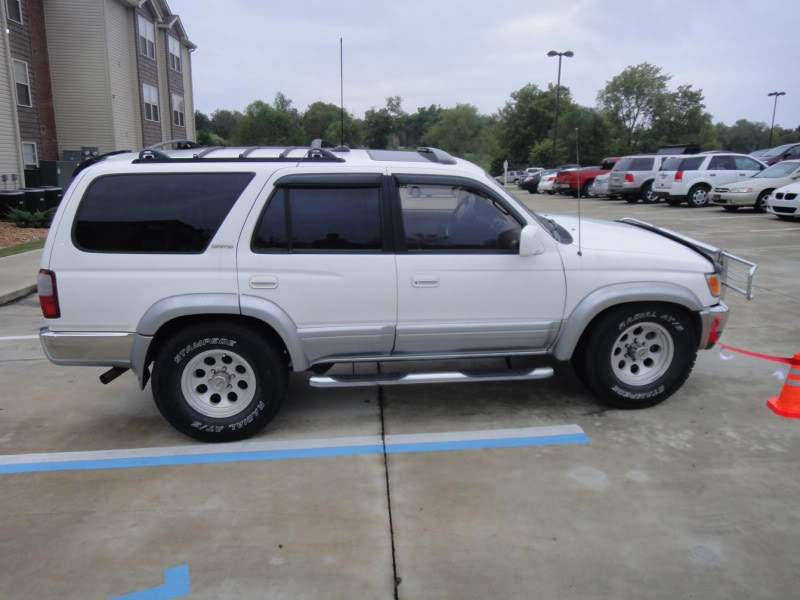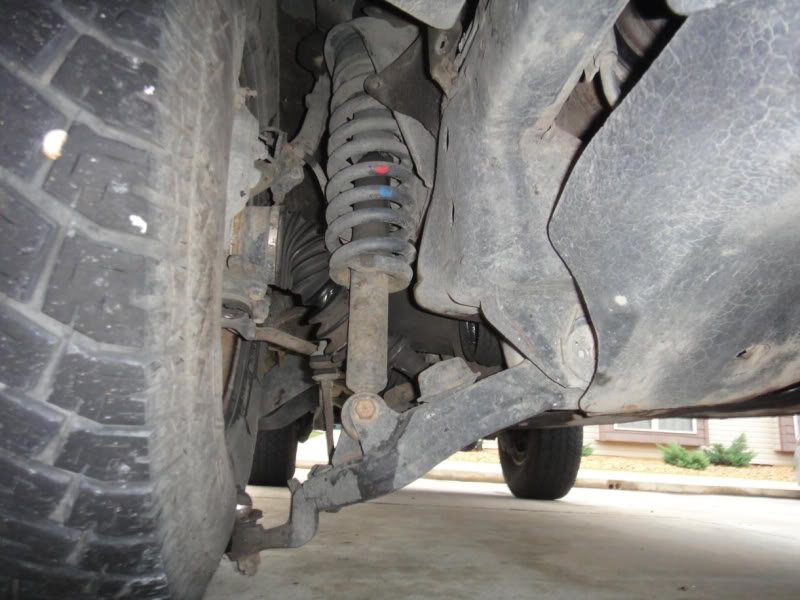Last edit by: IB Advertising
See related guides and technical advice from our community experts:
- Toyota Tacoma Recalls and Technical Service Bulletins<br>Imporatnt information to help you understand your Tacoma.
Toyota Truck, 4Runner, Tundra Balljoint Failures
#1
Toyota Truck, 4Runner, Tundra Balljoint Failures
The balljoints on early Tacomas and 96 to 04 4runners, Tundras and Tacomas are all non failsafe designs. The ball is above the lower control arm which leads to the ball constantly being pulled apart from its socket. When it fails it will totally separate causing the arm to drop to the road. Toyota has since switched to the failsafe design which compresses the ball into the socket instead of trying to pull it apart. The ball is under the lower control arm now instead of on top of it...05 and up Tacomas, 4Runners, FJ Cruiser and new Tundras. If the ball gets worn and loose it will not pull apart and drop on the road. In picture Below note Ball on top of LCA.
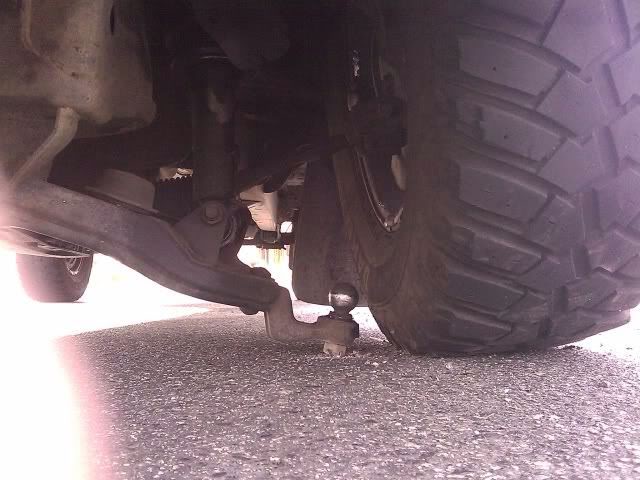
In pic Below Arm forced down by Coilover and wheel assembly attached to top of ball joint pulling it apart. If worn or a severe bottom out where arm is pressed into bumpatops the pull apart force will be severe and if Ball is worn it will pull out with catastrophic results...NON FAILSAFE DESIGN!!!
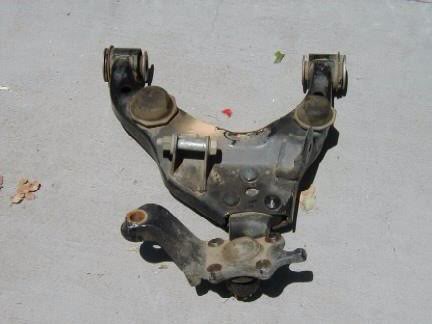
Pic Below is Toyotas new design used on all new Trucks and SUVs..Ball is below arm and is naturally pressed together instead of being pulled apart. A loose Ball or severe bottom out will not cause LCA to drop on the road or dirt and cause a crash. FAILSAFE DESIGN!!!
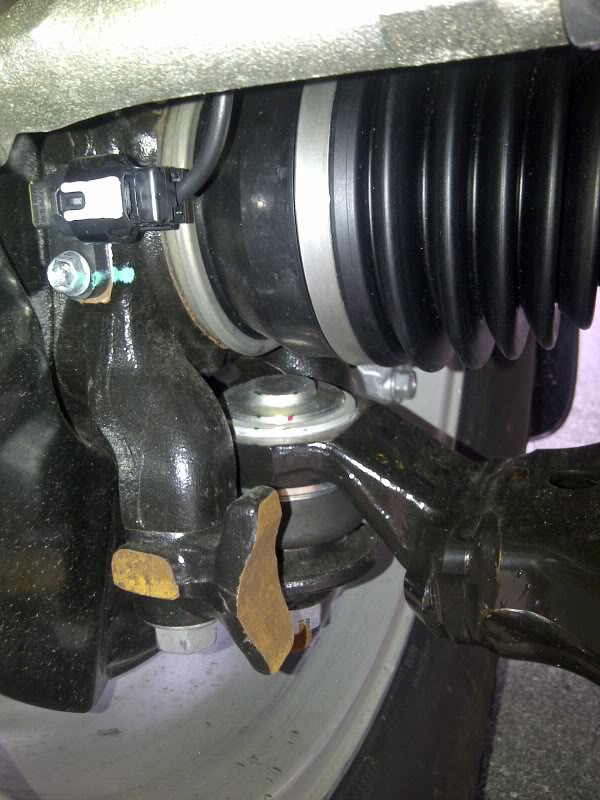
More examples
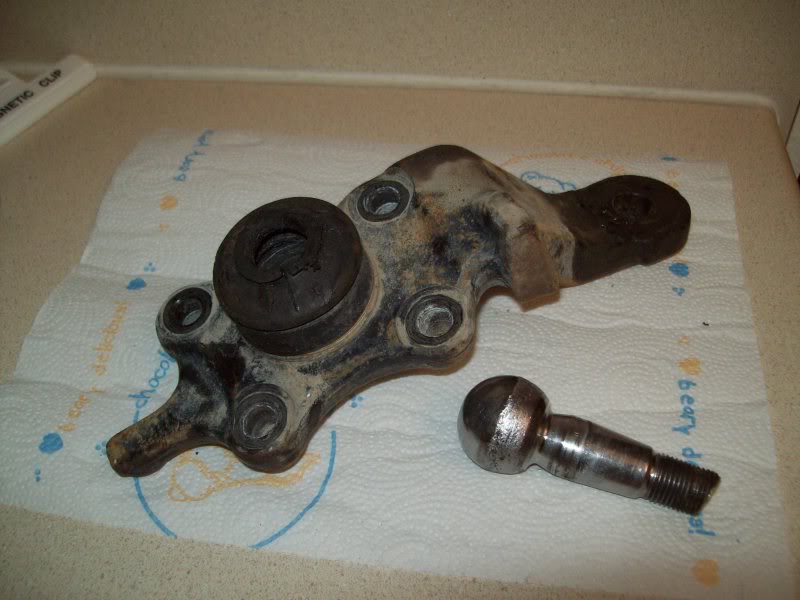
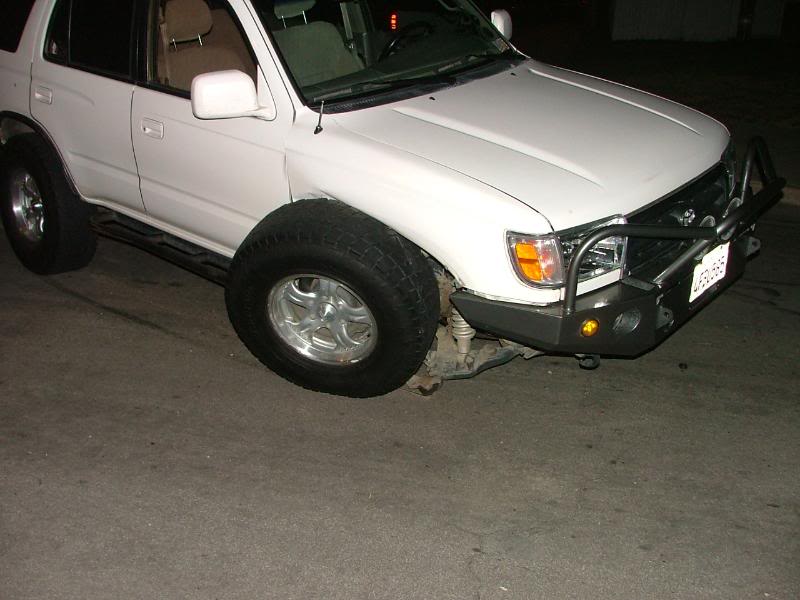
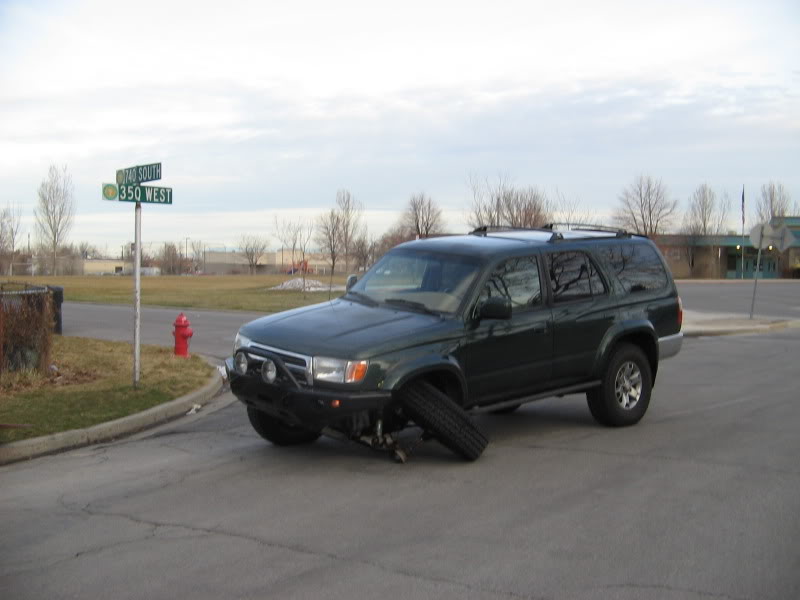
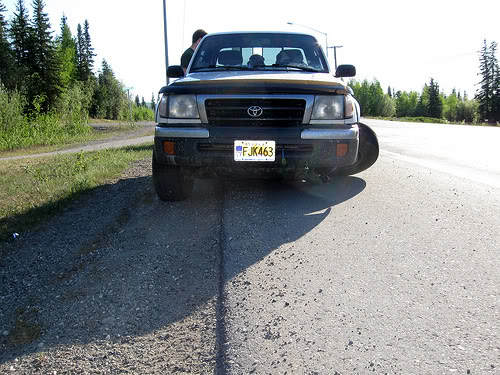
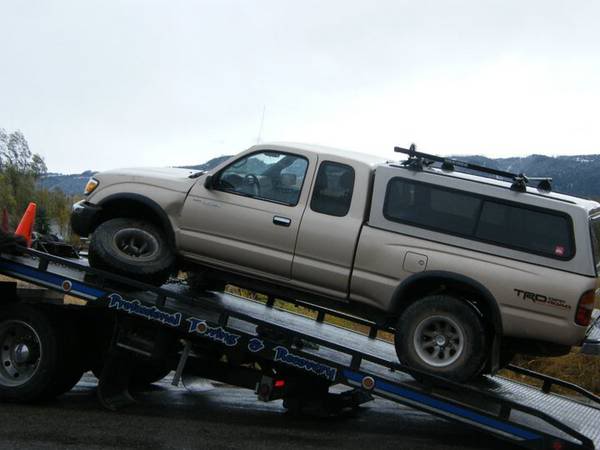
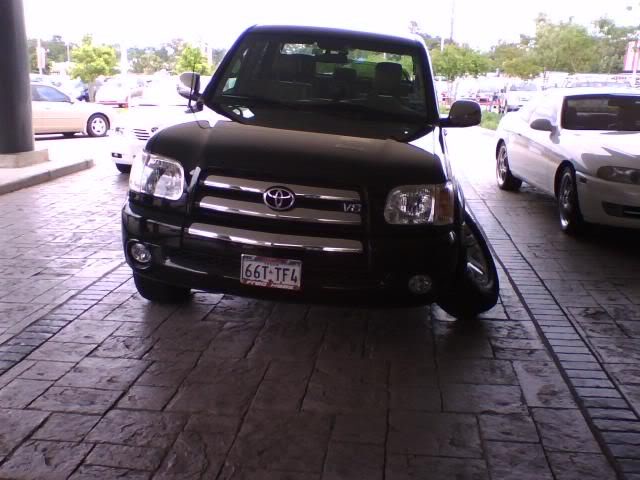

In pic Below Arm forced down by Coilover and wheel assembly attached to top of ball joint pulling it apart. If worn or a severe bottom out where arm is pressed into bumpatops the pull apart force will be severe and if Ball is worn it will pull out with catastrophic results...NON FAILSAFE DESIGN!!!

Pic Below is Toyotas new design used on all new Trucks and SUVs..Ball is below arm and is naturally pressed together instead of being pulled apart. A loose Ball or severe bottom out will not cause LCA to drop on the road or dirt and cause a crash. FAILSAFE DESIGN!!!

More examples






#2
All this ball joint talk has convinced me to buy new front upper and lower OEM ball joints for my Runner. It has about 180k on it and I think it looks better without a tire folded underneath it. 
Anyone have the part numbers handy?

Anyone have the part numbers handy?
#3
Just a quick question for this to happen. Is there a lot of severe neqlect to maintenance on these vehicles? Such as off roading or lift kits or maybe wheel and tires not stock size? Is it also maybe not upgrading these balls joints to handle the bigger tires?
#4
Securing bolts have come loose on some too. Make sure you use new bolts locktite and recommended torque, Bolts are not reuseable.
Last edited by milowilli; 11-17-2011 at 02:08 PM. Reason: Picture
Trending Topics
#9
This is a Design Flaw by Toyota. Suspensions are under heavy loads and a worn balljoint is not supposed to fail in this catastrophic manner. Most other manifacturers have used the Ball under the LCA which presses the ball together instead of pulling it apart. Any wear in Ball will cause it to pop out of its socket resulting in this Catastrophic failure. The only way to avoid this on these model trucks is to make sure lower balljoints are OEM ONLY and Possibly MOOG. Ensure they are tight and all bolts are secure. Newer Tacomas and 4runners have the Failsafe design with the ball UNDER the LCA and wont fail in this manner. A good Coilover assembly that reduces Bottoming out will also help alot. When the arm hits the bumpstop the pull apart force is even greater because the arm stops and the wheel which is attached to the balljoint ball wants to continue moving up inside the fender..if the ball is worn it will pull out and go where it wants to go!!! Timbren SES on these trucks help in taking some of the stress off the lower balljoints.
Last edited by milowilli; 11-17-2011 at 02:48 PM.
#10
Hey all, posting this info here because it is the most relevant spot I see, and I could not find the answer anywhere on the internets... so here it is for search purposes for anyone looking
The 4 bolts used on the lower ball joint are Toyota Part Number: 90105-10406, which have been replaced by 90080-10066. There are 4 required per side. These appear to be M10x1.25 bolts, 30mm long, though the stock bolt appears about 1mm longer than the 30mm bolt I bought. They are flanged head bolts, and I believe are supposed to be grade 10.9.
There are no numbers on the factory head, just a pattern of "Dot, dash, dash, dot, dash, dash" spaced evenly around head like the pattern you would see on an SAE grade 8 bolt, with the dashes aligned radially (from center out). Instead of the SAE grade 8 pattern of 6 lines, two of the dashes across from each other are a dot. I have no idea what this means, and I tried google'in it already.
Oh, and someone somewhere mentioned you should use blue loctite on the bolts because that is what the factory did... this seems like a good idea, I can't verify, but it is generally a good idea on any suspension parts anyway.
Out of 8 dealerships I called, none had the bolts available in stock. One had them at one point, but they were sent to a customer. No dealership is able to find the dimensions of the bolt if you were to opt for non-OEM replacements (local auto store/hardware store/etc). Disclaimer: Don't use non-OEM parts (figured I should mention, just because, but do what you want)
The below notes are from the Toyota FSM for a 1999 Toyota 4Runner 4WD, do not take my word for it, verify yourself if you are so inclined, this is for reference only...
- On-Vehicle lower balljoint inspection should show no more than 0.5mm play in vertical direction
- The 4 Bolts show torque spec of 59 ft-lbs
- Lower Ball-Joint Nut 105 ft-lbs
- Tie-Rod End Nut 67 ft-lbs
- Loosen but do not remove the 4 bolts until ball joint is popped loose, do not take nut off of BJ ball stud all the way until joint is popped loose, other wise stuff can separate violently...
- New BJ is supposed to be checked for turning torque before installation, this is how easy/hard it is to rotate the ball-stud in the joint, with LBJ ass'y in vise/clamp, rotate stud (using two nuts on stud?) for a continuous motion for 2-4 seconds, 4 times, on the 5th time, measure torque required to turn (on a beam style torque wrench, or super fancy digital readout one), it should be 0.8 - 21.7 in.·lbf according to the manual (.07-1.8 ft-lb)...
- Installation is the reverse of removal. The following is (not) copied from the FSM verbatim: If you broke stuff taking it apart, un-break or replace that stuff to put together, unless you can verify that a sufficient amount of zip-ties will do. Do not zip tie anything on your suspension together, no amount of zip-ties hold your BJ together if you forgot the nut or cotter pin, or if you forgot any of the 4 bolts. A zip-tie combined with a paper towel will however perform a satisfactory job fixing the gash on the top of your left index (finger) knuckle caused in removing the ball-joint.
One more edit: Be careful if you were to replace your LBJs with non-OEM from a parts store of you choice. The bolts I received with mine were 8.8 grade blackened steel instead of the goldish plating that the stock ones had. The replacements were also not flanged, and came with a lock-washer, with AND/OR without the lockwasher, they are 3-4 threads SHORTER than stock, and would likely NOT engage in the threaded holes of your knuckle enough. Make sure to verify your replacement bolt length, this is one of many spots that thread engagement is very important.
Thank you for reading if you got this far Hopefully some of this info helps someone searching at some point
Hopefully some of this info helps someone searching at some point
The 4 bolts used on the lower ball joint are Toyota Part Number: 90105-10406, which have been replaced by 90080-10066. There are 4 required per side. These appear to be M10x1.25 bolts, 30mm long, though the stock bolt appears about 1mm longer than the 30mm bolt I bought. They are flanged head bolts, and I believe are supposed to be grade 10.9.
There are no numbers on the factory head, just a pattern of "Dot, dash, dash, dot, dash, dash" spaced evenly around head like the pattern you would see on an SAE grade 8 bolt, with the dashes aligned radially (from center out). Instead of the SAE grade 8 pattern of 6 lines, two of the dashes across from each other are a dot. I have no idea what this means, and I tried google'in it already.
Oh, and someone somewhere mentioned you should use blue loctite on the bolts because that is what the factory did... this seems like a good idea, I can't verify, but it is generally a good idea on any suspension parts anyway.
Out of 8 dealerships I called, none had the bolts available in stock. One had them at one point, but they were sent to a customer. No dealership is able to find the dimensions of the bolt if you were to opt for non-OEM replacements (local auto store/hardware store/etc). Disclaimer: Don't use non-OEM parts (figured I should mention, just because, but do what you want)
The below notes are from the Toyota FSM for a 1999 Toyota 4Runner 4WD, do not take my word for it, verify yourself if you are so inclined, this is for reference only...
- On-Vehicle lower balljoint inspection should show no more than 0.5mm play in vertical direction
- The 4 Bolts show torque spec of 59 ft-lbs
- Lower Ball-Joint Nut 105 ft-lbs
- Tie-Rod End Nut 67 ft-lbs
- Loosen but do not remove the 4 bolts until ball joint is popped loose, do not take nut off of BJ ball stud all the way until joint is popped loose, other wise stuff can separate violently...
- New BJ is supposed to be checked for turning torque before installation, this is how easy/hard it is to rotate the ball-stud in the joint, with LBJ ass'y in vise/clamp, rotate stud (using two nuts on stud?) for a continuous motion for 2-4 seconds, 4 times, on the 5th time, measure torque required to turn (on a beam style torque wrench, or super fancy digital readout one), it should be 0.8 - 21.7 in.·lbf according to the manual (.07-1.8 ft-lb)...
- Installation is the reverse of removal. The following is (not) copied from the FSM verbatim: If you broke stuff taking it apart, un-break or replace that stuff to put together, unless you can verify that a sufficient amount of zip-ties will do. Do not zip tie anything on your suspension together, no amount of zip-ties hold your BJ together if you forgot the nut or cotter pin, or if you forgot any of the 4 bolts. A zip-tie combined with a paper towel will however perform a satisfactory job fixing the gash on the top of your left index (finger) knuckle caused in removing the ball-joint.
One more edit: Be careful if you were to replace your LBJs with non-OEM from a parts store of you choice. The bolts I received with mine were 8.8 grade blackened steel instead of the goldish plating that the stock ones had. The replacements were also not flanged, and came with a lock-washer, with AND/OR without the lockwasher, they are 3-4 threads SHORTER than stock, and would likely NOT engage in the threaded holes of your knuckle enough. Make sure to verify your replacement bolt length, this is one of many spots that thread engagement is very important.
Thank you for reading if you got this far
 Hopefully some of this info helps someone searching at some point
Hopefully some of this info helps someone searching at some point
Last edited by wjwerdna; 01-26-2013 at 09:44 AM.
#11
Can the LCA of the 4th gen 4Runner be retrofitted into a 3rd gen 4Runner without cutting and welding on the 3rd gens ladder frame?
I understand the LCA's mounts for the shock and end link will have to be relocated.
I understand the LCA's mounts for the shock and end link will have to be relocated.
#12
#15
With these balljoint failures, can routine inspections determine if a balljoint is about to failt? eg. shaking the wheel or seeing play in the joints. Or do these failures just happen out of the blue with little warning?
#16
Contributing Member
Joined: Nov 2010
Posts: 5,125
Likes: 2
From: Columbia River Gorge, Oregon...east side
With these balljoint failures, can routine inspections determine if a balljoint is about to failt? Sometimes it can.
eg. shaking the wheel or seeing play in the joints. Or do these failures just happen out of the blue with little warning? Yes, they have failed with no warning in some cases.
eg. shaking the wheel or seeing play in the joints. Or do these failures just happen out of the blue with little warning? Yes, they have failed with no warning in some cases.
No symptoms per owner on this one:
https://www.yotatech.com/forums/f2/t...ailure-262698/
Last edited by rworegon; 01-27-2013 at 07:31 PM.
#17
Very minimal play is accepted as wear space can cause the ball to pull out of the socket..remember the weight of the truck is on the balls so if clearance is excessive they just pop out with weight. The other failure point is the 4 securing bolts which must have exact torque specs. Tensile forces on the bolts and dowels due to steering being connected to the balljoint is also a failure issue especially with over sized wheels combined with off road stress. These failures only occur in first gen Tundras, Tacomas and 3 rd gen 4 Runners..First gen IFS 86-89 and the newer trucks don't have these issues.
#19
https://www.yotatech.com/forums/f28/...l#post52033348





